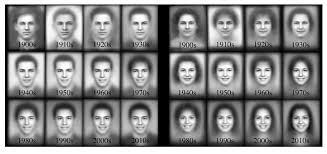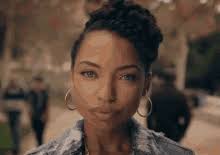What race did edges come from? Although edges have risen to it-girl stardom, its roots derive from racial oppression. Black and brown people would use styling products to slick back their hair to hide their beautiful naturally curly hair and conform to European beauty standards.
Are hair edges cultural? The unique artistry known as “laying” hair edges has turned into a cultural phenomenon that those with textured hair work on to perfect. It helps create the ideal finishing touch to their favorite hairstyle. Although swooped edges have recently become popular, this hairstyle has been around for over a decade.
How do white girls get edges in their hair?
What culture started doing edges? Laying edges is an art form that highlights the beauty and uniqueness of black hair. This hairstyle was invented during a time when black women did not have many options or resources for taking care of their hair and this style represents the strength and creativity of black women.
What race did edges come from? – Additional Questions
What race started braids?
“The origin of braids can be traced back 5000 years in African culture to 3500 BC—they were very popular among women.” Braids are not just a style; this craft is a form of art. “Braiding started in Africa with the Himba people of Namibia,” says Pace. “These people have been braiding their hair for centuries.
Who laid their edges first?
While Josephine Baker is the first entertainer on record styling her edges in the ’20s; 1930’s movie star Rita Hayworth, born Margarita Cansino, famously surgically removed her natural baby hair and pushed her hairline back to pass as a white woman.
Why is it called baby hair?
“Baby hairs are produced when the growing (anagen) phase of the hair cycle becomes shorter,” trichologist David Salinger told ELLE Australia. “Normally, this happens over several cycles.” When the growing cycle shortens, new hairs simply don’t grow as long as those that cover the rest of your head, ever.
Are edges baby hairs?
“Baby hair” is the shorter hair that usually grows from the front part (or “edges”) of the hairline. Styling your baby hair is often referred to as “laying your edges” or “slicking” them down, and is effectively styled using an “edge control” product and toothbrush (or other fine styling instrument).
What are baby hairs?
“Baby hairs” are the thin, wispy hairs that sometimes grow around your hairline. Also called “peach fuzz” or “vellus,” these hairs have a much different texture than the hair around the rest of your head. This difference in texture often means that these hairs are hard to style, and they don’t lay flat.
What is baby hair called?
Lanugo is soft, fine hair covering a fetus while inside the uterus (womb). It helps protect them and keeps them warm while they grow. Some newborns have lanugo covering their bodies at birth, especially if they’re born prematurely.
What are edges in black hair?
Edges, a term born in the black community, are the baby-hairs that grow on the perimeter of one’s forehead. Slayed edges are like a soft-kiss from God, and styling them is truly an art form. Like any craft, it requires the right tools and training.
How can I grow my edges back?
How can you grow your edges back?
- Avoid hairstyles that are too tight. Take a break from any hairstyles that put too much tension on your hairline, says P.
- Be super gentle when brushing your hair.
- Take a break from heat tools.
- Wrap your hair before bed.
- Moisturize your edges.
- Eat your veggies.
- Don’t ignore your scalp care.
How can I thicken my edges?
Here are the top six things you need to incorporate into your hair routine to get your edges back on track and learn how to thicken your edges.
- Loose Protective Styles.
- Wrap Your Hair At Night.
- Ditch the “Scalp Stimulators”
- Use Natural Products Only.
- Scalp Massages.
- No Heat or Chemicals.
- The Bottom Line.
Will edges ever grow back?
“Thinning edges are usually a result of over manipulation and tension,” Stevens explained. “There’s no way to ‘grow them back’ unless you stop doing what’s pulling them out. Once you stop applying stress and pressure to the area, the hair should begin to grow back in after six to eight weeks.”
How can I thicken my hairline?
Why is my hair so thin I can see my scalp?
Stress. Telogen hair, or ‘resting’ hair, comprises around 15% of the hair on a person’s scalp. Periods of elevated stress can lead to this hair being temporarily lost, contributing to a visibly thinner scalp and hairline.
Does M shaped hairline mean balding?
If your hairline is about the width of your finger above the top wrinkle, you probably have a mature hairline. If it’s receding onto your scalp, it may mean balding. The shape is an M or a widow’s peak. An M-shaped hairline removes the round curves of the young hairline and makes a more defined hairline.
Can thin hair become thick again?
Here’s the truth: You can’t change the size of your hair follicles. If you were born with fine hair, it’s genetics, and no product will completely alter that. Of course, there are ways to maintain your hair health, add volume, and keep it from getting any thinner.
What foods make hair thicker?
The 13 Best Foods for Hair Growth
- Eggs. Eggs are a great source of protein and biotin, two nutrients that are essential for hair growth.
- Berries. Berries are loaded with beneficial compounds and vitamins that may support hair growth.
- Spinach.
- Fatty fish.
- Sweet potatoes.
- Avocados.
- Nuts.
- Seeds.
What vitamin helps thicken hair?
Vitamin C
Vitamin C is also of the top vitamins for thicker fuller hair because it’s critical for the body’s production of collagen, an essential ingredient in the hair structure. Foods such as red bell peppers, dark leafy greens, tomatoes and citrus fruits are rich in Vitamin C.
Can brushing your hair cause hair loss?
At its simplest level, skipping hair brushing will not prevent hair loss – which is what some people assume when they hear brushing might contribute to hair loss. However, under certain circumstances, brushing your hair can contribute to increased breakage and a particular type of hair loss.


